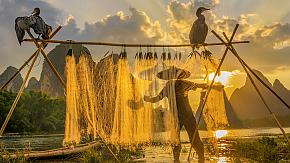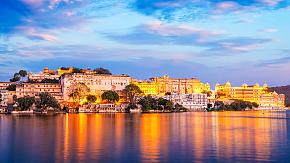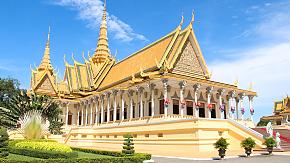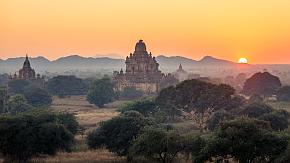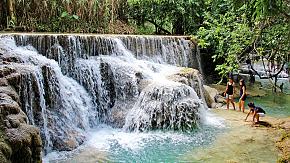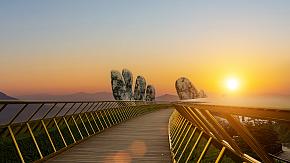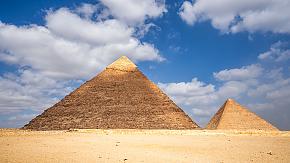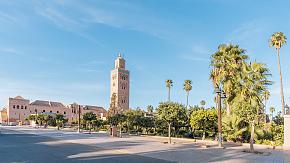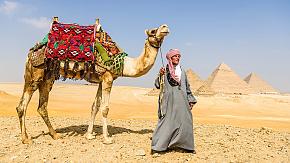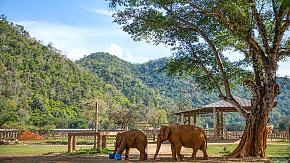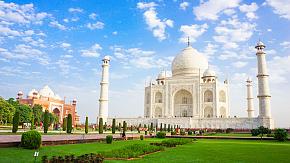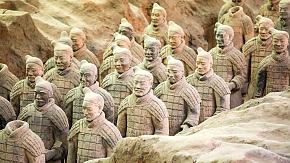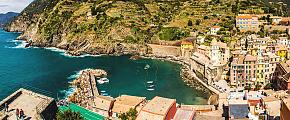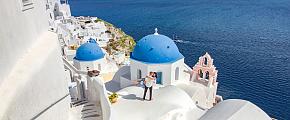10 Must-See Places in the World (Before It's Too Late)
I am writing this with a heavy heart the day after fire devastated Notre Dame Cathedral in Paris, prompting great grief among not only the French, but the whole world. Over 850 years old, the badly damaged cathedral represents centuries of history and culture in a way that no other French building can. While France has vowed to restore the cathedral within five years, something will still have been irretrievably lost.
There are many other buildings and structures whose loss would be disastrous for the world. Tower Bridge in London, completed in 1894, is symbolic of London in my and people's minds. So, too is Rome's Colosseum, a powerful symbol to Italians. Sydney Opera House. The Statue of Liberty. So many.
So here I will look briefly at a highly personal selection of ten of the most iconic buildings or constructions the world has to offer. These are mostly in Asia; those in Europe are already well documented. Some you will know; some perhaps not. In no particular order.
The Great Wall, China
 The Great Wall of China
The Great Wall of China
What symbolises China most? There are so many choices. A case could be made for the Forbidden City (Officially the Palace Museum), but I'm going to put the Great Wall in first place. Chairman Mao famously said that "He who has never been to the Great Wall is not a true man".
Actually, a series of walls and ramparts built, destroyed, rebuilt and restored over centuries, the wall is estimated to be over 21,000km (13,000 miles) long. Much of what is accessible to visitors today was built in the Ming Dynasty (1368–1644) and the wall is universally regarded as one of the greatest architectural achievements ever. For most visitors, the sections of the wall nearest to Beijing are the first choice. These have been restored more recently. Badaling and Mutianyu are the most complete and accessible parts.
Do not visit the wall during the main Chinese public holidays (Chinese New Year, The first weeks of May and October); thousands of "true men" and women visit on those dates. You will see nothing but people.
The Taj Mahal, India
 The Taj Mahal, India
The Taj Mahal, India
This was an easy choice. The world's most famous monument to love, the Taj Mahal in Agra, India is known to almost everyone on our planet. Completed in 1653, this is a mausoleum created by the Mughal emperor, Shah Jahan to house the tomb of his favourite wife, Mumtaz Mahal. Today, it attracts around 8 million visitors a year.
Many people around the world will remember the famous photograph of the lonely Princess Diana sitting in front of the Taj Mahal looking sad and lost.
The Taj Mahal, too is a building in urgent need of restoration and preservation. The Indian government has ordered a wide "pollution-free" area around the monument in order to try to protect it and further restoration is underway.
Durbar Square, Nepal
 Durbar Square, Nepal
Durbar Square, Nepal
Durbar Square is the centre of Kathmandu in the Himalayan country of Nepal. Central not only physically, but central to the Nepali culture.
The UNESCO World Heritage Site lies in front of the old royal palace and the square is full of palace buildings and temples. Historic courtyards and quadrangles are all around, but perhaps the most interesting, or at least different, site is the palace of the Kumari Chowk on the south side of the square. This is home to the Raj Kumari, a living goddess in the local Hindu religion and believed by the devout to be a reincarnation of the mother goddess, Durga. A young girl is chosen by secret divination and lives in the palace, where she may be glimpsed at her windows. While one may photograph the building, photographing the girl is strictly prohibited.
Angkor Wat, Cambodia
 Angkor Wat, Cambodia
Angkor Wat, Cambodia
Angkor Wat (City of Temples) is one of the largest religious sites in the world. The complex of temples was originally built as a Hindu place of worship, but by the late-12th century had shifted to Buddhism.
By the 19th century, the complex was almost abandoned and the surrounding jungle was taking over, but in the 20th century, restoration work began, briefly interrupted by the Khmer Rouge's control of Cambodia in the1970s and 80s. Today, restoration is still underway.
Shwedagon Pagoda, Myanmar
 Shwedagon Pagoda, Myanmar
Shwedagon Pagoda, Myanmar
Towering above the skyline of Yangon (formerly Rangoon) is Shwedagon Pagoda, also known as the Golden Pagoda. Myanmar's most sacred building. The gold covered stupa, built somewhere between the 6 and 10 centuries AD, is the largest of many in the city and is believed by Buddhists to contain eight hairs from Siddhārtha Gautama, the original Buddha, as well as other important relics.
The pagoda is built of bricks covered with solid gold plates and at the very top there is a 76 carat (15 g) diamond. Everyone from common people to Burmese royalty has, for hundreds of years, donated gold to the pagoda to help maintain it. One Burmese queen donated her weight in gold – 41kg (90 pounds)!
Like so many of these structures, the building has fallen into disrepair and struck by earthquakes over the centuries, most recently in 1970, only to be rebuilt or restored.
Wat Phra Kaew, Thailand
 Wat Phra Kaew, Thailand
Wat Phra Kaew, Thailand
Wat Phra Kaew (The Temple of the Emerald Buddha) in Bangkok is the most sacred temple in Thailand. It is home to the Emerald Buddha, seen by devout Thais as the protector of the country. Only the Thai king is allowed to touch the statue and he also symbolically changes the statues cloak three times a year to mark the changing of the seasons. This restriction on touching the statue means that no scientific analysis has ever been done, so its precise age and composition are unknown.|
The whole complex is ornate and beautiful, full of temples, towers and statues of elephants, important animals in Thai culture.
Please remember this is a very active place of worship, so respectful behaviour is a must. As with all Buddhist temples in Thailand (and elsewhere), a strict dress code is in place. Men must wear long trousers and fully sleeved shirts. Women must wear long dresses. Before entering any temple building, shoes must be removed and while sitting be sure never to point your feet at anyone. Tuck your feet backwards behind you while sitting. The Thais also believe the top of the head is the most sacred part of the body, so never touch anyone, especially children on the head.
Pha That Luang, Laos
 Pha That Luang, Laos
Pha That Luang, Laos
Pha That Luang, in Vientiane, the capital of Laos is a large partially gold covered Buddhist stupa. Like so many of the buildings mentioned here, it has been destroyed, reconstructed and restored several times over the centuries, mainly due to invasions and colonization.
44 metres (147.6 feet) high, the stupa is a symbol of Laos, replete with references to Laotian culture. Like Angkor Wat, it was originally built as a Hindu monument but later became dedicated to Buddhism. Today, it is built on three levels reflecting the Buddhist belief in three steps to nirvana.
Notre-Dame Cathedral Basilica of Saigon, Vietnam
 Notre-Dame Cathedral Basilica of Saigon
Notre-Dame Cathedral Basilica of Saigon
In the heart of Saigon (now Ho Chi Minh City) is a second "Notre Dame" although its official English name is the Cathedral Basilica of Our Lady of The Immaculate Conception, but more commonly known as Notre-Dame Cathedral Basilica of Saigon. Built between 1863 and 1880, when Vietnam was colonised by the French, this cathedral is notable for the iconic statue of Mary standing on its east side.
Astonishingly, the building was constructed entirely from materials shipped all the way from France. The statue, however, was made in Rome and shipped to Saigon in 1959.
Unfortunately, like so many, the cathedral is undergoing conservation work and is currently covered in scaffolding. Work was originally expected to end in 2019, but the work carried out so far revealed unforeseen damage to the structure and now the restoration is expected to last 2027, so it is temporarily closed to the public.
The Great Pyramid of Giza, Egypt
 The Great Pyramid of Giza, Egypt
The Great Pyramid of Giza, Egypt
One of the oldest and remaining ancient wonder of the world is, of course, The Great Pyramid of Giza, near Cairo and is believed to have been completed in 2560 BC as a tomb for the Pharaoh Khufu, also known as Cheops. At 146.5 metres (481 feet) tall, it was for centuries the tallest man-made structure in the world.
The whole surrounding area has two more pyramids, the famous Great Sphinx and several lesser buildings, including a village which housed the pyramids' builder, so it's the major tourist destination in Egypt.
Jemaa el-Fnaa, Morocco
 Jemaa el-Fnaa, Morocco
Jemaa el-Fnaa, Morocco
What do you think of when you consider Morocco? The movie Casablanca? For me, it's deserts and markets. The Souk, Jemaa el-Fnaa, in Marrakech lies at the heart of the Medina (or Old City). This consists of a large square comprised of the market, hotels, cafés, and restaurants.
Although popular with tourists, the square is also central to the lives of the local inhabitants. It is almost like three places in one, changing as the day proceeds. For most of the day, it is dedicated to selling mainly freshly squeezed orange juice or water to help rehydrate the population in the blazing heat. Later in the day, the square is filled with entertainers including traditional story-tellers. But it is at night that the place really takes off. It is filled with food stalls serving all the delights Magreb food has to offer.
One side of the square is the souk or market, catering for both locals and tourists alike. Everything from food, spices and daily necessities to tourist souvenirs is available here, but most valuable to me is to just soak up the culture.
So, these are my choices today. Next week I may come up with others and, of course, you have your own list.
While it is true that uncontrolled tourism can cause great damage to the environment in some destinations, it is also true that controlled, sustainable tourism can bring huge benefits. Protection, restoration, and conservation are expensive undertakings and resources are limited, especially in developing nations. Tourism can bring much needed financial resources, which if used wisely, can help preserve our world's fascinating but fragile heritage.
Remember, Odynovo can create tailor-made tours to all of these destinations and many more, matching your precise requirements and preferences, while looking after every detail, so that you can just concentrate on your unique experience.
Quick Question
What Our Clients Say
Explore the latest verified reviews of Odynovo's travel services on Tripadvisor, Google, Trustpilot, Product Review and more trusted platforms.

